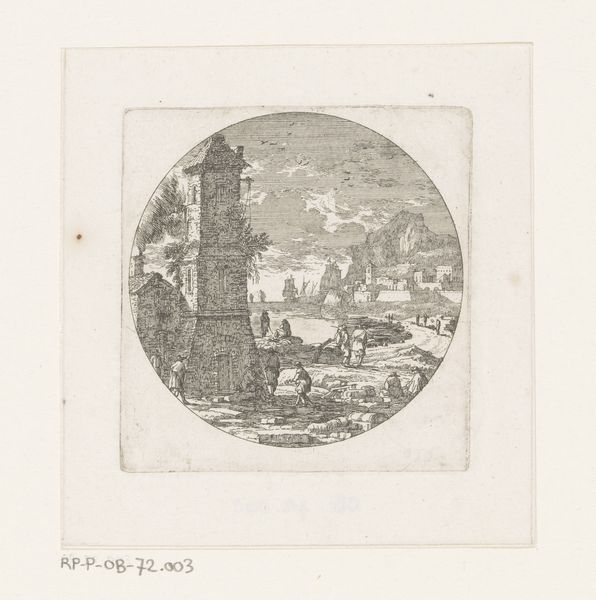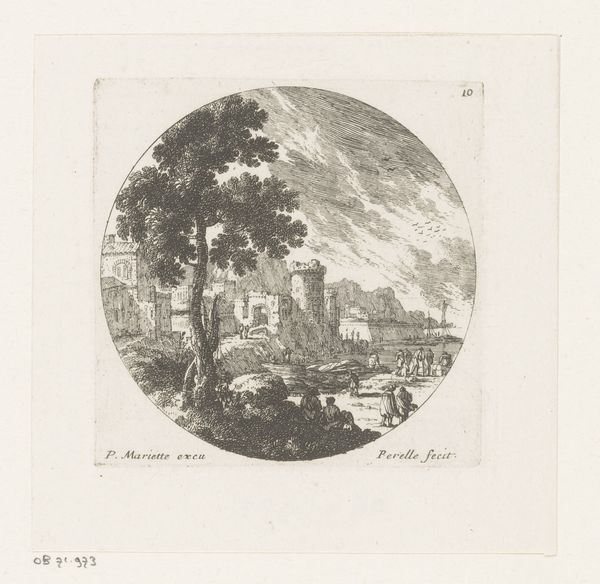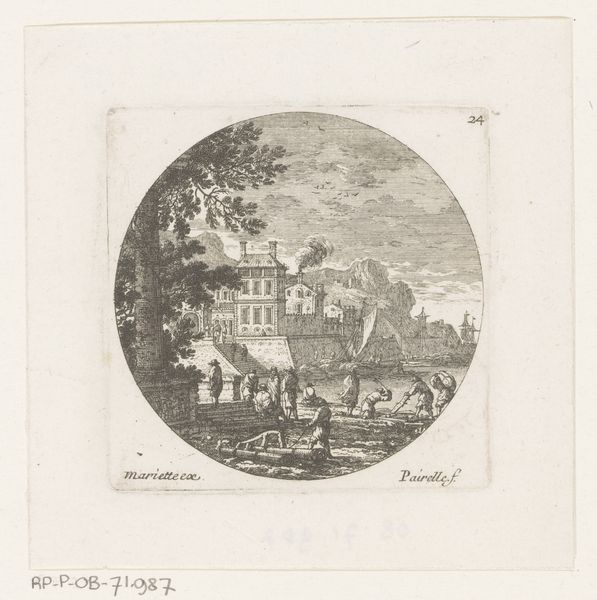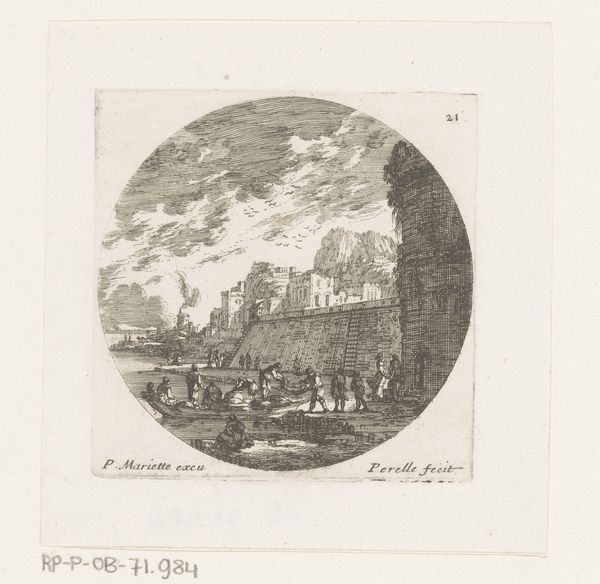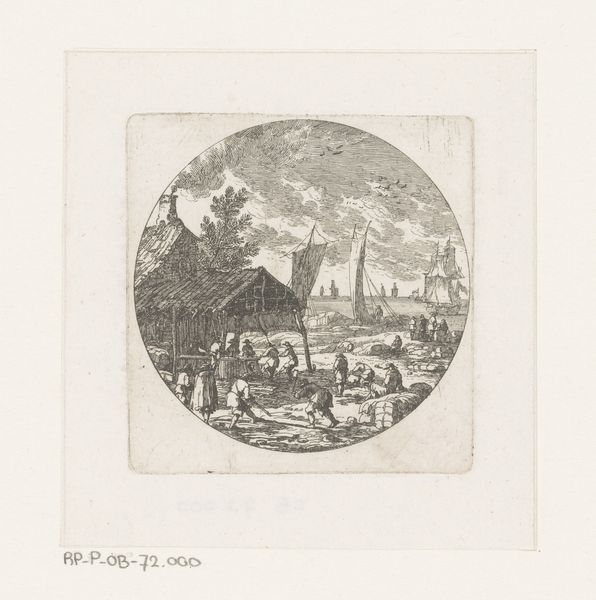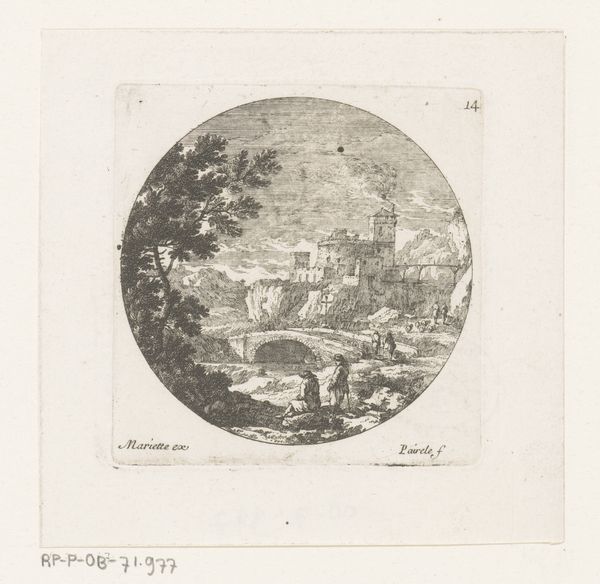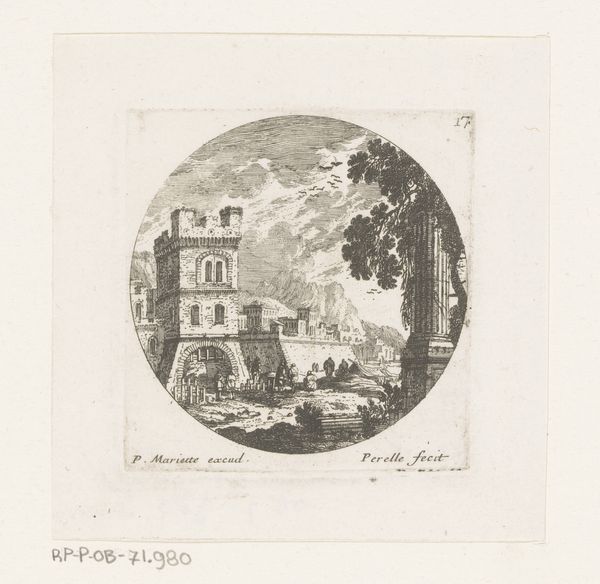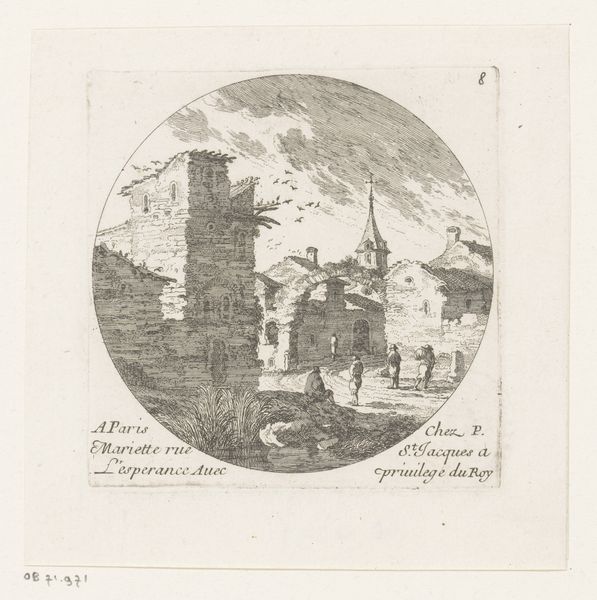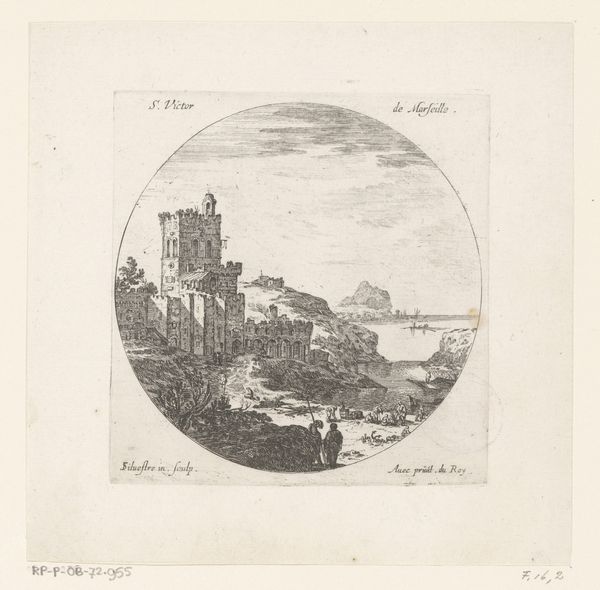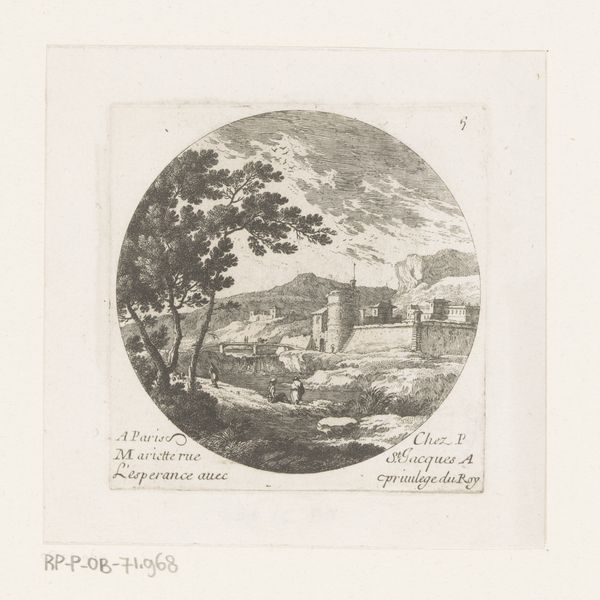
print, etching, engraving
#
baroque
# print
#
etching
#
old engraving style
#
landscape
#
etching
#
cityscape
#
engraving
Dimensions: height 88 mm, width 87 mm
Copyright: Rijks Museum: Open Domain
Editor: So, this is Nicolas Perelle's "Gezicht op bouwwerken, torens en brug," or "View of buildings, towers and a bridge," an etching from between 1613 and 1695. It's got this fantastic, almost dreamlike quality... a cityscape contained within a circle. What do you see in this piece that speaks to its time? Curator: The controlled precision of the etching medium is interesting. How does the ordered, constructed world it presents contrast with the turbulent social and political landscape of the 17th century? Consider the Fronde in France, a series of revolts against royal authority, which overlaps with the possible creation date of this print. Do you see echoes of those tensions here, perhaps a longing for stability? Editor: That's a great point! I was initially focused on the aesthetic beauty, the skill involved, but hadn't considered the social upheaval happening at the same time. The architecture does seem idealized, almost removed from reality. Is that common for cityscapes of this period? Curator: Often, yes. These kinds of idealized views served specific ideological functions. They projected power, stability, and a sense of civic pride. Notice how the bridge connects different parts of the city? Bridges often symbolize connection, literally and metaphorically. Consider who has access to those connections, and who is excluded? This raises questions about urban planning, access, and social control that are pertinent even today. What stories does it obscure? Editor: It's like a form of propaganda, subtly reinforcing the established order! I hadn't thought of it in terms of exclusion, more about the visual representation. That shifts my perspective. Curator: Exactly! Art doesn't exist in a vacuum. Examining these historical and social forces helps us unravel the layered meanings embedded in the image. Now, considering this context, how does that impact your initial reaction to its dreamlike quality? Editor: It makes it seem more deliberate, almost strategic. The "dream" becomes a constructed ideal. Thank you; that helps me contextualize so many elements I observed! Curator: And by recognizing this, you start to unravel its ideological complexities. That's what truly enriches our understanding.
Comments
No comments
Be the first to comment and join the conversation on the ultimate creative platform.
